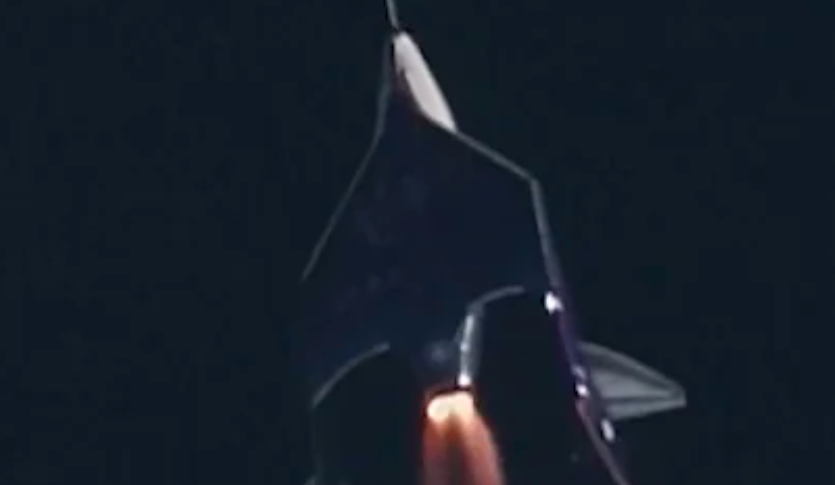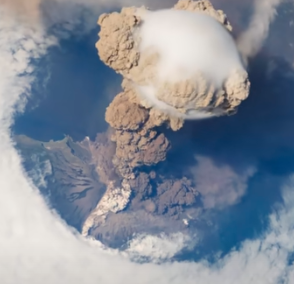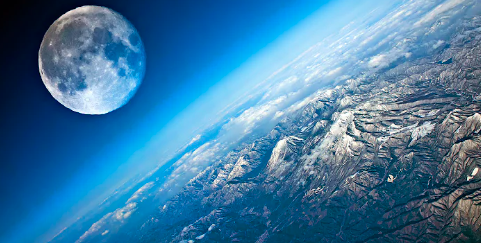People have dreamed of vacationing in space for decades, but it wasn’t until the 2000s that these dreams started to come true. Space tourism began in April 2001 when American businessman and engineer Dennis Tito became the first space tourist by travelling on a Soyuz-TM32 spacecraft. Since then, only seven private individuals have travelled to space as tourists.
Tourism has been a popular recreation among tour enthusiasts from the time immemorial. Currently, Tourism such as Cultural Tourism, Mountain Tourism, Nature Tourism, Adventure Tourism, Culinary Tourism, Eco-tourism, Slum Tourism and many many more are gaining popularity.
Gone are the days when space tourism was merely a fantastic notion—it’s rapidly becoming achievable! Thanks to improving technology and falling prices, venturing into space is no longer just a dream for adventure enthusiasts worldwide. SpaceX plans trips around the moon by mid-decade and future missions to Mars with humans onboard. It’s hard to say exactly when this will happen, but experts think affordable and regular commercial space travel could be real within the next 10-20 years.
Pioneering Companies in Space Tourism
The competition to commercialize space travel has produced leaders with diverse tactics but a common dream—making the stars accessible from our earthly perspective. The advent of space tourism occurred at the end of the 1990s with a deal between the Russian company MirCorp and the American company Space Adventures Ltd. MirCorp was a private venture in charge of the space station Mir. Innovators like Virgin Galactic are breaking boundaries along with others such as Blue Origin and SpaceX who lead exhilarating journeys just above Earth’s surface—and maybe soon around it too! While it has been expensive so far, there is optimism that costs will decrease as the industry advances.
Virgin Galactic’s Suborbital Journeys

Space tourism finds an innovator in Richard Branson’s venture, Virgin Galactic. Their 18.3-meter-long vehicle “SpaceShipTwo” can accommodate six passengers and two pilots for brief excursions to the edge of space. It was engineered to attain an altitude of approximately 110 kilometres (68 miles), although as of July 2021, it has only achieved up to 89.9 kilometres. Envision the exhilaration of escaping Earth’s gravity and witnessing its curvature from space—an unforgettable experience facilitated by Virgin Galactic. Blue Origin’s Vision for Space
Founded by Amazon CEO Jeff Bezos, Blue Origin is another major player in the space tourism industry. Imagine soaring into suborbital space aboard New Shepard, a reusable rocket currently in progress aimed at passenger travel. Looking ahead, Blue Anchor is not just thinking about trips to space; they’re planning for permanent life up there with planned orbital flights.
Blue Origin aims to land its Blue Moon Mark 1 cargo vehicle on the Moon next year, setting an aggressive timeline to chart a new course of decisive action and big swings after not reaching orbit in its first two decades of operations.
Apart from this, Virgin Galactic has already booked approximately 800 customers, with ticket prices ranging from $250,000 to $450,000 per seat. Dreaming big, the firm plans on ramping up its operations to manage around 400 annual flights.
SpaceX’s Ambitious Space Endeavors
Elon Musk’s SpaceX is perhaps the most ambitious of the space tourism companies, with plans to send humans to Mars and establish a permanent human presence on the red planet. Currently, they’re putting together a spaceship known as Starship designed to host as many as 100 people on journeys that circle our planet. Starship is a big rocket being built by SpaceX. As of May 2024, it is the largest and most powerful rocket ever flown. Starship’s primary objective is to lower launch costs significantly via economies of scale. Reportedly by the end of September 2023, the number of employees working in the company was more than 13,000.
The Cost of Experiencing Space
Elon Musk’s SpaceX is perhaps the most ambitious of the space tourism companies, with plans to send humans to Mars and establish a permanent human presence on the red planet. Currently, they’re putting together a spaceship known as Starship designed to host as many as 100 people on journeys that circle our planet. Starship is a big rocket being built by SpaceX. As of May 2024, it is the largest and most powerful rocket ever flown. Starship’s primary objective is to lower launch costs significantly via economies of scale. Reportedly by the end of September 2023, the number of employees working in the company was more than 13,000.
The Future Market of Space Tourism
Despite the high cost, the demand for space tourism is increasing rapidly. According to a report by UBS, the space tourism market is expected to be worth $3 billion by 2030, with an estimated 10,000 passengers flying to space each year.
With more companies jumping on board and given rapid technology improvement, experts say they expect a $20 billion industry by 2040. That’s right; hundreds of thousands could be living out their astronaut dreams each year.
Infrastructure for the Final Frontier
The first commercial spaceport, Spaceport America, opened in New Mexico in 2011. Since then, many more spaceports have been set up around the world. These include the Mojave Air and Space Port in California and the Mid-Atlantic Regional Spaceport in Virginia.
To fan the flames of space tourism’s growth, we need to construct the stage – literally. Serious infrastructure development is on the horizon. This includes the construction of spaceports, which are essentially airports for spacecraft.

Environmental and Safety Considerations
As more tourists venture beyond Earth’s atmosphere, questions loom large over their well-being in orbit and down below – will this industry be kind to our world? With every rocket launch comes a surge in pollution — lots of CO2 alongside various contaminants that threaten to hasten climate shifts. According to data from the United Nations Office for Outer Space Affairs, 2023 was a record year for launching satellites, probes, landers and more into space. But scientists worry those plumes of exhaust trailing behind rockets could be scattering harmful pollutants into the pristine upper layers of the atmosphere.
The thrill of space travel comes with serious risks like possible malfunctions and dangerous incidents which can threaten lives up there. And let’s not forget about all the space junk whizzing around the Earth at breakneck speeds – it’s like a minefield up there for spacecraft and satellites.
Space Tourists and Astronauts who stay in space, where there is almost no atmosphere, are exposed to higher energy radiation than on the earth. If a person is exposed to higher energy radiation, the risk of exposure to diseases like cancer increases.
As of right now, the consequences of space tourism on our carbon footprint are yet unverified. However, a study in 2010 created a model to project the potential impact of upwards of 400 rocket launches a year over 40 years. A recent study reveals that rockets add annually a total of about 6500 kilos of carbon every day. Expectations from recent studies suggest an alarming increase in temperature exceeding one degree Celsius at both poles. This also entails approximately five per cent less sea ice which is so disturbing.
Unique Experiences Offered by Space Tourism
Imagine the exhilaration of floating effortlessly, marvelling at the Earth’s magnificence from a cosmic perspective. Also, consider encountering the vastness of space firsthand. Thrusting boldly into the unknown, space tourism courageously confronts the spectre of risk.

Inspiring Future Generations Through Space Exploration
Just think – a wide-eyed kid, gazing up at the night sky, dreaming of what lies beyond. With space tourism on the rise, that dream is closer than ever. Every rocket launch seems to boost not just satellites into orbit, but also fascination with STEM disciplines amongst aspiring young scholars across the globe.
As we boldly step into the unknown territories of space, our minds are ablaze with questions, our hearts pounding with excitement and crave to be on those untrodden paths, we might stumble upon something that changes the course of human history. Moreover, the curiosity about space tourism will keep increasing along with the ongoing explorations. By aiming for the stars commercially, there’s been an impressive uptick. Thanks to deeper explorations—and cultural—with much greater knowledge-sharing around rocket science advancements.
Challenges and Opportunities Ahead
Commercial space travel will differ significantly from any terrestrial destination trip. All current bookings for space tourism are made years in advance. Consequently, once an individual secures a place on a flight, he must wait until the scheduled departure.
As the departure date approaches, the company facilitating the journey will require assurance of physical fitness from each participant. Virgin Galactic provides training 12 months before departure. Similarly, medical examinations occur six months prior, and several days of pre-flight training immediately before launch. This rigorous preparation is essential due to the physical strain experienced during atmospheric exit and re-entry. Unfortunately, the opportunities to join the space tourism crowd are limited, and not everyone will make the grade. Allowing physically unfit individuals would be exceedingly irresponsible and may result in dire consequences.
Celebrating Milestones in Space Tourism
Futuristic Impacts of Space Tourism on the Global Market
Dennis Tito visited the International Space Station for seven days in April–May 2001, becoming the world’s first “fee-paying” space tourist. The price tag for his journey? A whopping $20 million. He was succeeded in April 2002 by South African Mark Shuttleworth (Soyuz TM-34). Since Dennis Tito’s trailblazing flight in 2001, we have witnessed remarkable advancements in spacecraft technology. Imagine hopping on a spacecraft as easily as you do a plane.
A flurry of new achievements can punctuate the near future. People are waiting to embark on thrilling adventures in the vast expanse of space. They see a future where this ultimate frontier is accessible to anyone who dares to dream ambitiously
FAQs about Space Travel
Q.1. State briefly what is the future of space tourism.
Ans: Space tourism is blasting off. Soon, we’ll see more companies sending folks to orbit, making space jaunts a bit less exclusive.
Q.2. What are the chances scientists will be able to conquer the setbacks they’ll inevitably face as they press onward?
Ans: Faced with numerous hurdles, the breakneck pace of space technology development brings the prize – a tangible breakthrough – compellingly close.
Q.3. What were the most fascinating facts astronauts encountered in space?
Ans: Astronauts get taller in space, spacesuits are very expensive, and space smells like cooked meat. Moreover, there’s no sound in a vacuum, and photos of Earth amaze everyone.
Q.4. Could the next three decades see us scratching that intergalactic itch, or are we still a far cry from ditching our terrestrial bounds?
Ans: Bet on it. With rapid tech leaps and dropping costs, hopping a flight to orbit might be your next tour option.